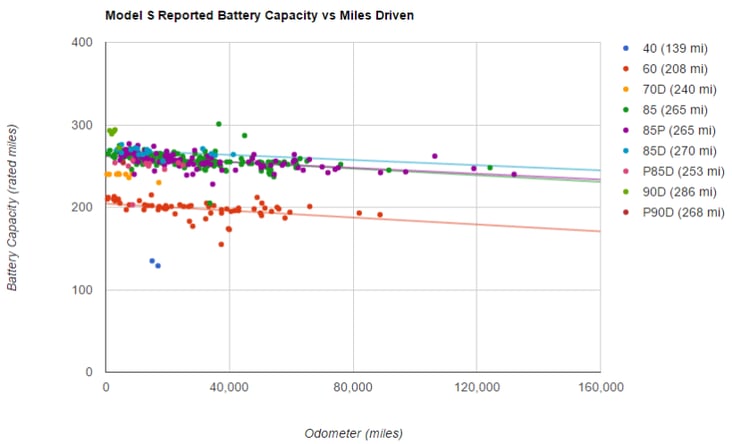
Solar Impulse 2 takes a nighttime flight over the Statue of Liberty.
Advanced energy moves pretty fast, and this week we’ve got more movement in planes, trains, and automobiles, as well as some interesting storage solutions, plus some really small modular reactors being developed abroad. Phew! Buckle your seatbelts: This week’s news wrap-up could be a bumpy ride.
Transportation technologies in the U.S. have steadily advanced in the past decade, with hybrid electric vehicles going from quirky and expensive choice to commonplace and affordable, plug-in electric vehicles gaining a toehold in the market, and natural gas vehicles becoming an option for fleets all across the country. Interestingly enough, though, according to new data from the University of Chicago’s Energy Policy Institute and reported by Vox, for the first time since 1979, America’s cars, trucks, and airplanes produce more carbon dioxide than power plants, as the electric power sector has gotten cleaner and more efficient.
One airplane that is not contributing to those data is the Solar Impulse 2, the first manned solar-powered aircraft. The plane, which is powered by solar panels from AEE member SunPower, made its final stop in the U.S. this week, flying into JFK International Airport after layovers in San Francisco, Phoenix, Oklahoma, Ohio, and Pennsylvania. From New York City, the SunPower-powered crew will cross the Atlantic Ocean before touching down in Europe and eventually completing their around-the-world mission in Dubai.
In other advanced airplane news, NASA is coming closer than ever to an all-electric plane. Dubbed by the Wall Street Journal as a “Tesla of the skies,” the latest in the NASA “X-Planes” series (a series of planes developed by NASA that push the envelope: Chuck Yeager’s X-1 was the first airplane to break the sound barrier) will be powered entirely by hydrogen cells for taxiing and “electric power plants” instead of fuel-burning engines. “We are in the Wild, Wild West again of aeronautics,” said Mark Moore, a principal researcher at NASA, and as far as I can tell this is my space cowboy dream come true.
On the ground, Tesla Motors announced that, in addition to the upcoming Tesla Model 3, the company would begin offering two slightly more affordable versions of the Model S sedan, beginning at $66,000 in the U.S. The Model S 60 and the Model S 60D will have smaller battery packs and need recharging slightly more often than their more expensive counterparts, but they’ll still have a range of more than 200 miles.
Speaking of those batteries, how are they holding up years later? Long-term data has been hard to come by, but new findings from Plug-In America suggest that the batteries are doing better than expected. Plug-In America has been surveying Tesla owners on their driving habits and, with several drivers racking up significant mileage, some trends have begun to emerge. Notably, all of the vehicles with more than 100,000 miles on them can still travel well over 200 miles per charge. Though still in the early days, the data are encouraging for another reason as well – old EV batteries can be re-purposed as energy storage in stationery applications. Sort of like racetrack greyhounds that turn into long-legged couch potatoes in retirement.

In the effort to translate expertise in EV batteries to grid storage, Tesla is no longer alone. Nissan this week announced that it would launch a vehicle-to-grid pilot scheme, under which 100 Nissan LEAF drivers would use “bi-directional charging points” to sell power back to the grid at peak times. This effort grows out of a similar pilot program in Norway (not for nothing: Norway just announced that by 2025 no fossil-fuel powered vehicles would be sold in that country), where 40 drivers began selling power back to the grid.
“Today we have 18,000 electric Nissan LEAFs running on the roads in the U.K.,” said Pat Wilcox, chairman of Nissan Europe. “If all of those were connected, they would have a capacity of 180MW of energy — which is the equivalent to two power plants. In the future, if all vehicles on the road in the U.K. were electric and were connected, we would make a virtual power plant of 370GW. That’s enough power to cover the U.K., Germany and France.”
Nissan is also entering the home energy storage system market. The automaker’s xStorage systems will be manufactured from retired LEAF batteries. The systems cost $4,322 apiece and will be sold in Europe beginning in September.
Not everyone thinks a wall-mounted car battery is the perfect storage system, though. In this week’s best headline, Wired Magazine published “Forget Elon’s Batteries—Fix the Grid With a Rock-Filled Train on a Hill,” discussing the Advanced Rail Energy Storage (ARES) train in California.
Advanced Rail Energy Storage (ARES), whose energy storage railroad has caught our attention before, hopes to begin construction in 2017 on a 50 MW test site in Nevada but, CEO James Kelly pointed out in an interview with Utility Dive earlier this year, the trains will only get more efficient as they get larger. “If we had a 500 MW project, we could double the capacity and it would only increase capital costs by 20%,” he said.
Finally, in nuke news, a United Kingdom-based small modular reactor consortium has begun a partnership with the Polish National Centre for Nuclear Research (NCBJ, which is an acronym that makes sense in Polish), to develop a micro-modular reactor, called a U-battery, which will have a capacity of 4 MW. Andrzej Piotrowski, Poland’s undersecretary of state and energy, said the agreement was “a major step in exploring a range of technologies to address future needs of safe, environment friendly, dispersed and still flexible and easy to integrate technologies of co-generative energy production.”
Keep track of all the latest in advanced energy news by subscribing to our free weekly newsletter. Click below!
